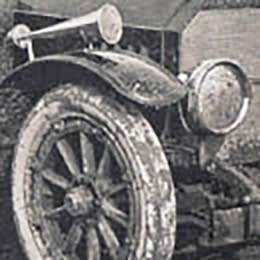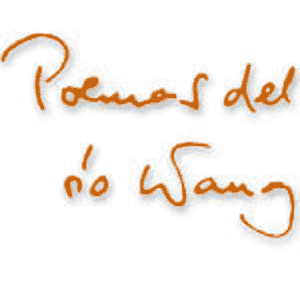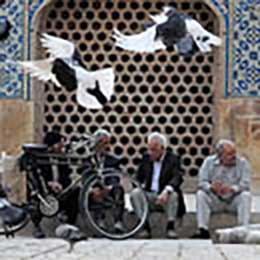
As the objects of the obscure, irrational and surreal “other town” hiding behind the usual and everyday Prague which sometimes penetrate by chance into our world and thus open the eyes of Michal Ajvaz to the existence of that one, are not what they appear to be, the sand container in Petřín is in the reality the lighting-window of the dome of an underground pagan cathedral, and the last door of the basement toilet of the Slavia café opens on an immense jungle cut across by a powerful river, in which the members of a tiger-adoring sect are massacring their own heretics; so the Hungarian crown standing in front of the railway station of Dunakeszi and slowly dribbling on the four Stonehenge dolmens supporting it like the clocks of Dalí, thus dissolving and invalidating the time, is not identical with the Hungarian crown that we have seen in the previous two posts, although it bears a striking resemblance to it. For the one we have seen in Iran and Austria, is the insignia of the Hungarian kings since the 12th century which, with its components coming from different countries, with the beautiful enamel images from 11th-century Limoges and 12th-century Byzantium, with the portrait of the Byzantine emperor Michael Dukas inserted on the place of a former icon of the Virgin Mary, with the cross standing obliquely but proudly on its top, and with its history full of vicissitudes is a true portrait of the thousand years old Hungarian statehood. The crown modeled in Dunakeszi, however, is a several thousand or ten thousands year old jewel of Hun or Sumerian origin – anyway, the both are the same –, a magic model of the cosmos, an energy center, sum of an infinite knowledge coming from outside the Earth or from the collective unconscious of mankind, the tabernacle of the religion of the highest order that has ever existed or that can be conceived. At least this is what the members of this esoteric Hungarian sect, unfortunately growing in number, preach of it.

The priests and believers of this religion are among us, like the night high priest of the faith of Dargúz in Ajvaz’s novel who in the daytime is the waiter of the restaurant of Pohořelec. They are stubborn Calvinists holding in contempt all kind of Popist idolatry, but uttering with the utmost respect the name of the Holy Crown. Catholics taking Communion every day, but propagating the Gospel of the Holy Crown every week in the Tuesday prayer meeting with the devote support of the parish priest. Department leaders of the Hungarian National Library who open the halls of the library to the mission of this cult. Architects – a most important order of knighthood of this religion – of whom you hope statically reliable houses and you receive the pattern design of the lines of force of the Holy Crown embracing the universe. Goldsmiths, sculptors and applied artists who on the one hand guarantee with their name for the authenticity of the myth of origin of this cult object, and on the other hand fill with works of art inspired by the myth the cultural centers, public squares, institutions and publications. Their presence is more perceptible in the countryside where I live than in the city where – as Ajvaz puts – the arm of the careful and perfidious god of the grammar conceals from us their network and their communities, on whose regular gatherings the wandering prophets of this faith József Molnár V., Gábor Papp, Lajos Szántai and their disciples steadily provide with spiritual food the believers of this mistery religion.

The crown in Dunakeszi refers to this still hiding world not only with its typical stylistic marks – its stiff, idol-like elaboration, its rustic dolmens and the burial hill heaped up under them –, but also with the fact that it visualizes an important article of faith of this cult: that the angle of inclination of the cross on the top of the crown is exactly identical with the angle of obliquity of the axis of the Earth. The sculptor, in order to emphasize this dogma, slipped the crown on the dolmens so that now everything is oblique on it, except for the only really oblique element, the cross, which thus stands erect perfectly vertically towards the sky, parallel with the axis of the Earth, looking exactly on the North Star like a small magic antenna.
 | ..... | In order to make realistic the implausible hunch on your back, you must simply bend the back of the world on the model of your hunch. Tamás Cseh - Géza Bereményi: Song about the Wily William Shakespeare |

May God save us of such eventuality.

























































































Add comment